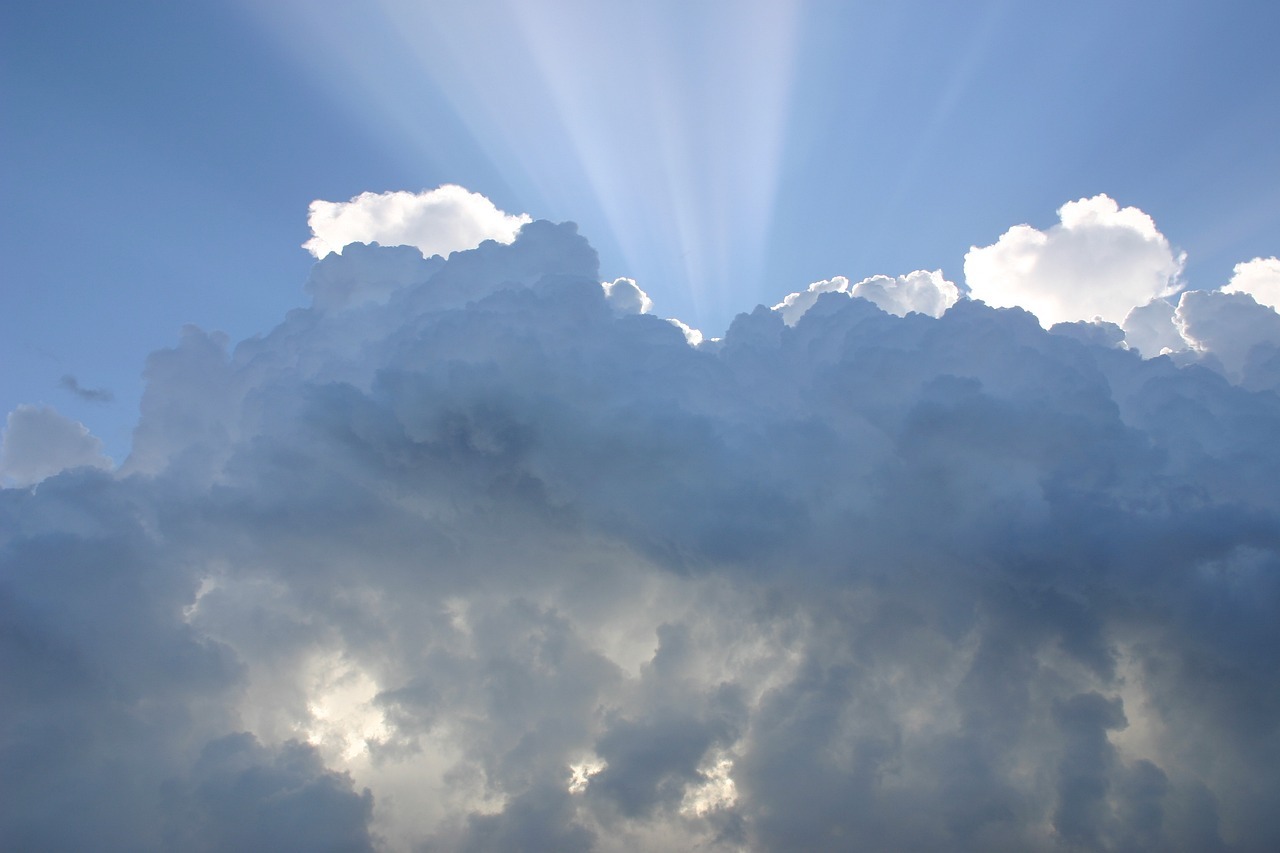Acts 1: 1-11; Psalm 47; Ephesians 1: 17-23 (RM) or 15-23 (RCL); Matthew 28: 16-20 (RM) or Luke 24: 44-53 (RCL).
A friend of mine, whose career prior to university ministry was as an art teacher, once told me that almost always, when students draw or paint a sunny landscape with clouds, they will depict cumulus clouds with fluffy round bulges all the way around. And that’s not the reality. She pointed into the sky and said,
“See, clouds are actually flat on the bottom. That’s because the water vapour is resting on a current of air or wind. The fluffy surface is on the top and sides.”
I’d never seen that before, and my mother was an artist who specialized in landscapes. My friend said, almost no one notices until it’s pointed out to them.
I think of that insight sometimes when I’m in a plane looking out onto the fluffy part from the window. Then, being of a certain generation, I remember Joni Mitchell,
“I’ve looked at clouds from both sides now. From up and down, and still somehow, it’s clouds’ illusions I recall. I really don’t know clouds at all.”
For the ancient Hebrew people, the cloud was an eloquent symbol of the presence of their God. A cloud both hides God from their sight, and represents God’s transcendent glory. In the New Testament, 1 Thessalonians 4:17 says that Christians will be
“caught up into the cloud to meet Jesus in the air when he descends again from heaven.”
In Revelation 11:12 the witnesses
“went up to heaven in a cloud while their enemies looked on.”
For the Romans, on the other hand, the concept of a hero being taken up in a cloud refers to a legend about one of their founding fathers, the twin Romulus. The most respected Roman historians and poets – Livy, Seneca, Cicero and others – all claimed that Romulus ascended to the heavens on a cloud. And for that matter, so did Julius Caesar, Augustus Caesar and several other Roman emperors, or so they say. The story amounts to a claim for the eternal cosmic sovereignty of a (once) powerful earthly emperor.
First-century readers or hearers of the Christian stories of Jesus’ ascension would most likely have made the association right away. They would have known that the real intended meaning was that the risen Christ, no longer to be seen on this earth, had assumed omnipotent power over the entire cosmos. This has to do with the changed Messianic image that Christians applied to Christ. Ascending into a cloud was never part of Jewish messianic expectations.
Our ancestors believed that the surface of the earth was covered with the dome of the sky, through which little holes – stars – admitted light. In popular belief that would mean that Jesus was living way, way up there, until he comes down again. The image became embedded into mystical visions and spiritual songs. And yet, how many Christians today would claim that we can see Jesus with the state-of-the-art James Webb telescope?
Does this leave us up in the air, so to speak? No. There’s a simple, common-sense moral to this story. The ascension account comes at the very end of the Gospel of Luke, and the very beginning of the book of Acts written by the same author. It makes a bridge between Jesus’ earthly life and ministry, and the experiences of the earliest Christians as they negotiated the difficulties involved in preaching and living their faith in the risen Christ.
Yes, there’s a time to hold our gaze upward, to contemplate that which is infinitely beyond and infinitely within. And then, as the men in white said to the apostles,
“Why are you still just standing there like statues looking up?”
Time to stop gazing at clouds. Start looking around. And see the living presence of Christ all around us.
© Susan K. Roll
Susan Roll retired from the Faculty of Theology at Saint Paul University, Ottawa, in 2018, where she served as Director of the Sophia Research Centre. Her research and publications are centred in the fields of liturgy, sacraments, and feminist theology. She holds a Ph.D. from the Catholic University of Leuven (Louvain), Belgium, and has been involved with international academic societies in liturgy and theology, as well as university chaplaincy, Indigenous ministry and church reform projects.





I have been looking up into the clouds today, and seeing “an eloquent symbol of the presence of …God.” Happy Ascension.